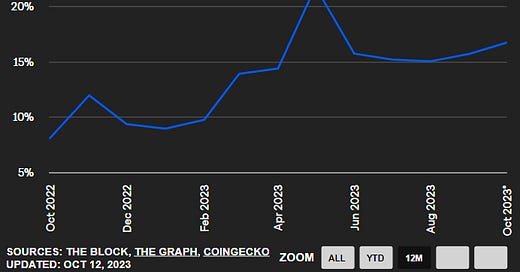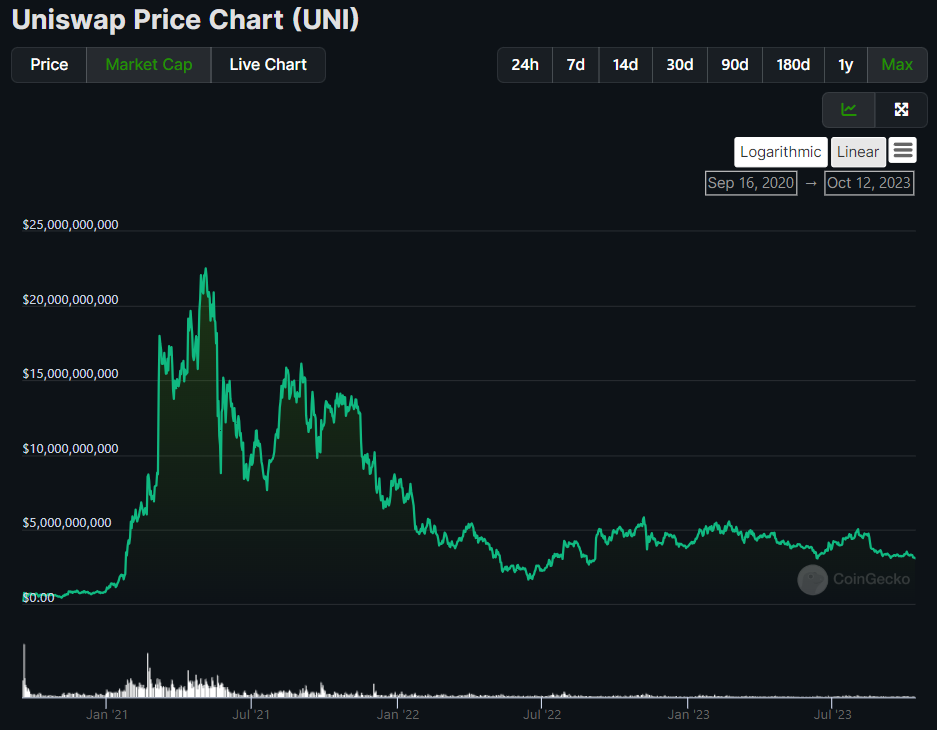Why you should care about DEXes
Since 2020, DEXes have proven themselves to be one of the most profitable on-chain businesses. The rankings of top protocols by fees collected are frequently dominated by DEXes, even in a low-volume market.
This shouldn’t be a surprise as centralized exchanges were among the most profitable businesses in the last crypto cycle. While the market looks flat at a high level, under the surface, DEXes have been increasing their share of total spot trade volume.
As the crypto market grows, either organically or as part of a speculative bubble, like we saw in 2021, if DEXes can continue growing their market share, there will likely be multiple DEXes worth hundreds of billions of dollars.
If that seems outlandish, think of them as marketplaces for digital assets. In the last cycle, Uniswap’s peak valuation topped $20 Billion and PancakeSwap’s topped $6 Billion.
Is it really outlandish to think that if total crypto market cap breaks its all-time high and DEXes represent a larger share of spot volume, the largest DEX would break its all-time high by 5X?
Before you rush off to buy UNI, note that I said “the largest DEX”. In this post, I’ll attempt to answer the question:
Which metrics are most useful for evaluating DEXes?
For this analysis, I focused on 11 DEXes, selected based on their market cap, volume, and total value locked (TVL):
Uniswap
Curve
PancakeSwap
Balancer
ThorChain
Maverick
Trader Joe
Raydium
Sushi
Velodrome
DODO
I’ll evaluate each of these DEXes across 6 metrics:
Volume
TVL
Users
Fees
Revenue
Volume/TVL (Capital Efficiency)
And look at the correlation between these metrics and the DEX market cap. Let’s dive in.
Keep reading with a 7-day free trial
Subscribe to Dynamo DeFi to keep reading this post and get 7 days of free access to the full post archives.





